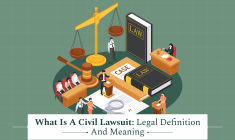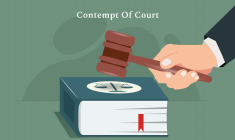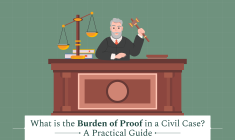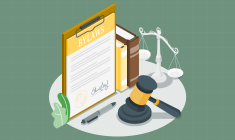We all have faced emotional distress, but it is not always feasible to sue for the same. In this article, we shall discuss how the law handles emotional distress and the steps necessary to file an emotional distress lawsuit. So, we aim to answer your question: can you sue for emotional distress?
What Is Emotional Distress?

Emotional distress is generally defined as mental suffering. The legal definition of the same is more complicated. Moreover, the language tends to vary from one state to another. However, the basic definition of emotional distress is mental suffering caused by someone else’s actions. This is either on purpose or by accident.
Symptoms Of Emotional Distress

Here are some symptoms of emotional distress mentioned below.
- Depression
- Anxiety
- Shame or guilt
- Flashbacks
- Insomnia or nightmares
- Chronic headaches
- Weight gain or loss
- Uncontrollable crying
Legal Definition of Emotional Distress

The legal distinction comes in this very matter. The matter, “caused by someone else’s actions,” is crucial in such circumstances. So, let’s use a car accident as an example.
- The first element of a car accident case is that individuals must drive legally and safely on public roads. Moreover, anyone who makes use of a vehicle must be licensed and must obey the traffic laws.
- The second element of all negligence cases is breach of duty. Moreover, the driver does not behave like a reasonable individual might have in such a circumstance. Similarly, in the case of a car accident, the breach happens when the individual speeds or runs at a stop sign. Generally, any law violation will be a breach of the duty to drive safely. But a breach of duty occurs by doing anything a reasonable individual wouldn’t have done.
- The third element in such a case is that the breach of duty causes harm. This is where emotional distress comes into play. So, if a car runs a stop sign and hits your car, various damages can arise. Moreover, your vehicle shall be damaged. Similarly, you or your passengers are injured and might experience mental suffering as a result.
- Finally, the harm causes damage. When the driver hits your car, the cost of repairs and medical treatment can be assigned a value. Moreover, courts have also determined ways to assign value to mental suffering.
You must note that emotional distress does not always amount to physical harm. Emotional distress is known as pain and suffering. It can also be tied with post-traumatic stress disorder (PTSD), anxiety, depression, and other kinds of mental distress that can arise from car accidents where no physical harm was caused.
Can You Sue For Emotional Distress? Types of Claims and Examples

Can I sue for emotional distress? Well, yes, you can. Emotional distress cases can be based on negligent infliction of emotional distress. Moreover, “intentional” suggests the main difference between the two types of cases. If someone intends to cause distress, it can sometimes be enough to file a lawsuit.
Negligent Infliction
Within a car crash example, there’s a case for pain and suffering to be considered along with other harm caused by the accident. So, instead, the accident happened, but no one was physically hurt.
So, for you to successfully sue for emotional distress in most states, you would have to prove some physical reaction even though there was no physical contact. Moreover, if you are scared you break out hives or develop a tremor in your hand, you might be able to seek damages from the driver.
Similarly, the need for physical symptoms can vary from one state to another. This is with some allowance of a case to proceed if the symptoms tend to be only minor issues like loss of appetite or inability to sleep. Some states have scrapped the requirement for physical symptoms altogether in recent years.
The Bystander Lawsuit
One of the subsets for negligent infliction of emotional distress is the bystander lawsuit. Let’s get back to the example of a car accident. So, you were not within the intersection when the driver went through. And were never in danger personally. However, you have witnessed the driver hit your parents, who were crossing the streets.
In such cases, you can file a lawsuit against the driver who has caused you emotional distress even when you have no physical symptoms or have not been harmed or touched. Moreover, this could have been the case if you had arrived soon. However, it differed from the case you could pursue that you’ve merely heard about later.
Even if we replace your parents with your best friend in the scene, most states shall not allow you to file an emotional distress lawsuit. So, most bystander lawsuits are limited to family members such as parents, grandchildren, children, siblings, or relatives you tend to live with.
Intentional Infliction
The other two lawsuits mentioned above primarily dealt with negligence or unintentional infliction of emotional distress. However, intentionally causing someone mental anguish is an entirely different scenario.
However, if we were allowed to sue every time, we become upset with someone’s behavior. Then, we all shall have visited the court most of the time. To avoid this, the courts limit cases of intentional infliction of emotional distress (IIED) to instances where conduct is extreme and outrageous.
An IIED claim depends on specific facts and whether you can effectively convince a judge or the jury that conduct is extreme enough to cause emotional distress. Instances of bullying or name-calling will not suffice to support the claim, but extreme examples that cause distress might.
When Can You Sue For Emotional Distress?

Suing for emotional distress is only possible within certain circumstances. Here are some instances when you can sue for emotional distress.
Emotional Distress From Physical Injury
Suing for emotional distress with severe physical injury is pretty standard. For instance, if you were seriously hurt in a car accident caused by a drunk or dangerous driver. Then, you’re likely to be entitled to compensation for emotional distress.
Intentional Infliction of Emotional Distress (IIED)
You have the right to sue for IIED when someone intentionally engages in outrageous conduct. This must have caused extreme emotional suffering. For instance, these can include racial insults, threats of violence, stalking, and discrimination based on one’s sex.
Negligent Infliction of Emotional Distress (NIED)
NIED lawsuits tend to arise when another’s negligence causes you severe emotional distress. This can occur due to physical injuries or when witnessing another getting injured or killed. In such cases, unlike a bystander lawsuit, the breach of duty will impact you directly.
Bystander Lawsuit
Some states in the US will allow you to recover compensation if you have witnessed a traumatic event as a bystander. Moreover, this might have been a car accident, severe assault, or any other kind of incident.
However, whether you have a case can depend on various factors, including the event’s severity and how closely you are related to the victim.
Frequently Asked Questions (FAQs)
Here are some frequently asked questions about whether you can sue for emotional distress, as mentioned below.
Legally speaking, emotional distress is meant by mental anguish or emotional pain or suffering that physical manifestations must accompany. This is because lawmakers tend to avoid lawsuits over mere hurt feelings. So, you must prove that you’re suffering from high blood pressure, sleeplessness, anxiety, or some physical signs of emotional pain experienced.
For you to sue for emotional distress, the case must arise from someone else’s negligence or extreme or outrageous conduct. Once these criteria have been met, any solid negative emotional response could be the base of a lawsuit. These include (not exclusive):
• Anxiety
• Post-traumatic stress disorder
• Panic attacks
• Eating disorders
• Insomnia
Emotional distress can be challenging to prove or sue due to a lack of physical injuries. Moreover, when there are manifestations of distress in a physical sense, it can make it easier. The more evidence you can gather regarding your suffering. The stronger your case shall be.
Proving an emotional distress lawsuit can be challenging. You will be required to showcase a variety of evidence to prove what has caused you to suffer from emotional suffering.
If you’re diagnosed with PTSD, depression, or anxiety, it can improve your chances of proving your case in a court of law.
Final Thoughts
Now, you have a fair understanding of how you can sue for emotional distress. Make sure you have an experienced personal injury attorney by your side before you decide to file a lawsuit to compensate for your emotional suffering—best of luck.
Read Also:















